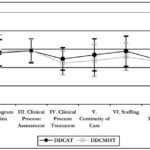Migraine is a prevalent neurological disorder characterized by recurrent headaches that can significantly impact an individual’s quality of life. Among the different types of migraines, migraine without aura is a common subtype. Accurate diagnosis is crucial for effective management and treatment. This article delves into the diagnostic criteria for migraine without aura, providing a comprehensive understanding based on the International Classification of Headache Disorders 3rd edition (ICHD-3).
Understanding the Diagnostic Criteria for Migraine Without Aura
Diagnosing migraine without aura relies on a set of specific criteria that healthcare professionals use to differentiate it from other headache disorders. According to the ICHD-3, the criteria for diagnosing migraine without aura are as follows:
Criterion A: Recurrent Attacks
The first criterion mandates that an individual must have experienced at least five headache attacks that fulfill criteria B-D. This requirement is in place because occasional migraine-like headaches can occur due to other underlying conditions. Establishing a pattern of recurrent attacks is essential for a diagnosis of migraine without aura. For individuals who present with fewer than five attacks but otherwise meet the criteria, a diagnosis of “Probable migraine without aura” may be considered.
Criterion B: Attack Duration
Migraine attacks, when untreated or unsuccessfully treated, must last between 4 to 72 hours. This duration helps distinguish migraines from shorter headache types like cluster headaches and longer-lasting tension-type headaches. It’s important to note that if a migraine resolves upon falling asleep, the duration is calculated until the point of awakening. In children and adolescents under 18, the duration can be slightly shorter, ranging from 2 to 72 hours, acknowledging that evidence for untreated durations less than two hours in children is not well-established.
Criterion C: Headache Characteristics
The headache itself must exhibit at least two of the following four characteristics:
- Unilateral Location: The pain is typically felt on one side of the head. While this is a hallmark feature, it’s worth noting that migraines can sometimes be bilateral, especially in children.
- Pulsating Quality: The headache pain is described as throbbing or pulsating, adding to the debilitating nature of the attack.
- Moderate or Severe Pain Intensity: The pain is significant enough to interfere with daily activities, ranging from moderate to severe on a pain scale.
- Aggravation by Routine Physical Activity: Everyday activities like walking or climbing stairs worsen the headache pain, leading individuals to avoid such activities during an attack.
Criterion D: Associated Symptoms
During the headache, at least one of the following symptoms must be present:
- Nausea and/or Vomiting: These gastrointestinal symptoms are commonly associated with migraine attacks and can further contribute to discomfort.
- Photophobia and Phonophobia: Increased sensitivity to light (photophobia) and sound (phonophobia) are characteristic migraine features, causing individuals to seek dark and quiet environments during an attack. In young children, these sensitivities may be inferred from their behavior, such as seeking refuge in dark rooms or reacting negatively to loud noises.
Criterion E: Not Better Accounted For by Another ICHD-3 Diagnosis
Finally, and crucially, the headache must not be better explained by another diagnosis within the ICHD-3 classification system. This emphasizes the importance of excluding secondary headaches that may mimic migraine symptoms but are caused by underlying medical conditions. Differential diagnosis is a critical step in accurately identifying migraine without aura.
Further Considerations for Migraine Without Aura
While the diagnostic criteria provide a structured framework, several additional points are important in understanding migraine without aura:
- Age and Pain Location: Migraines in children are more frequently bilateral, transitioning to unilateral pain typically in late adolescence or early adulthood. Frontotemporal pain is common, and occipital headaches in children should prompt careful evaluation for other causes. “Facial migraine,” where pain is located in the face, is considered a variant of migraine without aura, not a separate entity.
- Associated Symptoms: Migraine attacks can be accompanied by cranial autonomic symptoms (like nasal congestion or eye tearing) and cutaneous allodynia (pain from normally non-painful touch).
- Menstrual Migraine: Migraine without aura can be linked to menstruation in some women.
- Chronic Migraine and Medication Overuse: Frequent migraine attacks can evolve into chronic migraine. Furthermore, overuse of pain medications can worsen headaches, leading to medication-overuse headache. In such cases, both chronic migraine and medication-overuse headache diagnoses may apply. Migraine without aura is particularly susceptible to becoming chronic with frequent use of symptomatic medications.
- Neurobiological Basis: Migraine without aura is increasingly recognized as a neurobiological disorder. Research has shifted from a primarily vascular explanation to understanding the role of pain pathway sensitization and central nervous system involvement. Key molecules like nitric oxide (NO), 5-hydroxytryptamine (5-HT), and calcitonin gene-related peptide (CGRP) are implicated. The trigeminovascular system and brain regions like the trigeminal nucleus caudalis, thalamus, and central mesencephalic grey are crucial in migraine pain circuitry. The effectiveness of targeted medications like triptans, 5-HT1F receptor agonists, and CGRP receptor antagonists highlights the neurobiological underpinnings of migraine.
Conclusion
Accurate diagnosis of migraine without aura relies on a careful evaluation against the ICHD-3 criteria, considering the frequency, duration, characteristics, and associated symptoms of headaches, and excluding other potential causes. Understanding these diagnostic criteria is essential for healthcare professionals to effectively identify and manage migraine without aura, leading to improved patient outcomes and quality of life. Continued research into the neurobiological mechanisms of migraine promises further advancements in diagnosis and treatment strategies.
